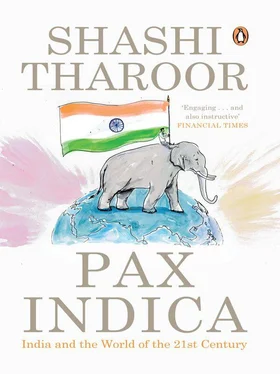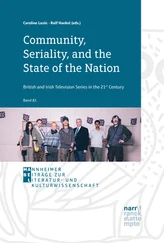Such global aspirations have long been part of India’s basic foreign policy posture. But while global institutions continue to adapt to the new world, regional ones could emerge into prominence. The world economic crisis should give us an opportunity to promote economic integration with our neighbours in the subcontinent who look to the growing Indian market to sell their goods and maintain their own growth. Yet as long as South Asia remains divided by futile rivalries and some continue to believe that terrorism can be a useful instrument of their strategic doctrines, that is bound to remain a distant prospect. That is why our neighbourhood will also be examined in a later chapter.
As a result the structure of this book is rather like an onion; it begins with Pakistan and peels outwards, from South Asia and the neighbourhood to the broader world beyond. This method permits us to see starkly what overwhelmingly occupies our short-term thinking before engaging with the broader concerns that must occupy a more prominent place in our international reflection. In the process of peeling this onion, I hope (without too many tears!) to offer my readers, in particular the younger generation of Indians, a worldview that helps orient them to their national and global inheritance. The book deals much less with the history of India’s foreign policy than with contemporary trends and future prospects, partly because history has not always been a reliable guide to the present (who could have imagined in 1998 the signing of the Indo-US nuclear deal in 2008?), and partly because my concern is principally with tomorrow, not yesterday. While much of the book’s detail is anchored in 2012, its broad thrust is intended to be relevant for some time to come.
I believe strongly that we must work to create a world in which Indians can prosper in safety and security, a world in which a transformed India can play a worthy part. This is a time in our national evolution when we must rethink the assumptions of our political philosophy, and rise to the need to refurbish our institutions with new ideas. An India led by rational, humane and open-minded ideas of itself must develop a view of the world that is also broad-minded, accommodative and responsible. That would be in keeping with the aspiration that Nehru launched us on when he spoke of our tryst with destiny. As we embark on the second decade of the twenty-first century, the time has indeed come for us to redeem his pledge.
Chapter Two Brother Enemy
Nearly six and a half decades after independence and Partition, Pakistan remains India’s biggest foreign policy challenge.
Pakistan was hacked off the stooped shoulders of India by the departing British in 1947 as a homeland for India’s Muslims, but (at least until very recently, if one can extrapolate from the two countries’ population growth trends) more Muslims have remained in India than live in Pakistan. Pakistan’s relations with India have ever since been bedevilled by a festering dispute over the divided territory of Kashmir, India’s only Muslim-majority state. Decades of open conflict and simmering hostility, punctuated by spasms of bonhomie that always seem to sputter out into recrimination, have characterized a relationship that has circumscribed India’s options and affected its strategic choices. The knowledge that our nearest neighbour, populated as it is by a people of a broadly similar ethnic mix and cultural heritage, defines itself in opposition to India and exercises its diplomatic and military energies principally to thwart and undermine us has inevitably coloured India’s actions and calculations on the regional and global stage. The resort by Pakistan to the sponsorship of militancy and terrorism within India as an instrument of state policy since the 1980s has made relations nearly as bad as in the immediate aftermath of independence.
When Pakistan was created in the Partition of 1947, the 544 ‘princely states’ (nominally ruled by assorted potentates but owing allegiance to the British Raj) were required to accede to either of the two new states. The maharaja of Jammu and Kashmir — a Muslim-majority state with a Hindu ruler — dithered over which of the two to join, and flirted optimistically with the idea of remaining independent. Pakistan, determined to wrest the territory, sent in a band of irregulars, who made considerable inroads before being distracted by the attractions of rapine and pillage. The panicked maharaja, fearing his state would fall to the marauders, acceded to India, which promptly paradropped troops who stopped the invaders (by now augmented by the Pakistani Army) in their tracks. India took Pakistan’s aggression to the UN as an international issue and declared a ceasefire that left it in possession of roughly two-thirds of the state.
To ascertain the wishes of the Kashmiri people, the UN mandated a plebiscite, to be conducted after the Pakistani troops had withdrawn from the territory they had captured. India had insisted on a popular vote, since the Kashmiri democratic movement, led by the fiery and hugely popular Sheikh Abdullah, was a pluralist movement associated with India’s Congress party (Abdullah was president of the Indian States’ Peoples’ Congress, a body set up by the Congress party to represent independence-minded people in the princely states) rather than with the Muslim League that had demanded the creation of Pakistan, and New Delhi had no doubt that India would win a plebiscite. For the same reason, conscious of Abdullah’s popularity, Pakistan refused to withdraw, and the plebiscite was never conducted. The dispute has festered ever since.
Four wars (in 1947–48, 1965, 1971 and 1999), all initiated by Pakistan, have been fought across the ceasefire line, now dubbed the Line of Control (LoC), without materially altering the situation. In the late 1980s, a Pakistan-backed insurrection by some Kashmiri Muslims, augmented by militants infiltrated across the LoC and supplied with arms and money by Pakistan, began. Both the militancy and the response to it by Indian security forces have caused great loss of life, damaged property and all but wrecked a Kashmiri economy dependent largely on tourism and the sale of handicrafts. In the process, both countries have suffered grievously: India, whose citizens have been killed in large numbers and which has had to deploy over half a million men under arms to keep the peace, and Pakistan, whose strategy of ‘bleeding India to death’ through insurgency and terrorism, in Kashmir and beyond, has accomplished little of value, while making its military enormously powerful within Pakistan and disproportionately well-resourced (largely thanks to Kashmir, the Pakistani Army controls a larger share of its national budget than any army in the world does).
If Kashmir is, to Pakistanis, the main casus belli, the horrors that were inflicted on Mumbai by terrorists from Pakistan at the end of November 2008 remain the starting point for any Indian’s discussion of Pakistan. They have left an abiding impact on all Indians. India picked itself up after the assault, but it counted the cost in lives lost, property destroyed and, most of all, in the scarred psyche of a ravaged nation. Deep and sustained anger across the country — at its demonstrated vulnerability to terror and at the multiple institutional failures that allowed such loss of life — prompted the immediate resignations of the home minister in Delhi and the chief minister and his deputy in Maharashtra. But ‘26/11’ in Mumbai represented a qualitative change in Pakistan’s long-running attempts to pursue ‘war by other means’. The assault, and the possibility of its recurrence, implied that there could be other consequences, yet to be measured, that the world will have to come to terms with in the future — consequences whose impact could extend well beyond India’s borders, with implications for the peace and security of the region, and the world.
Читать дальше












